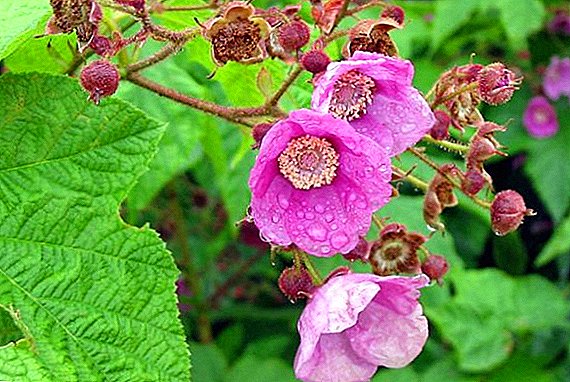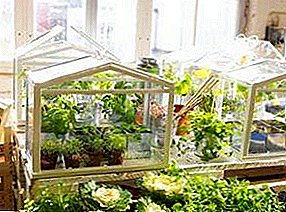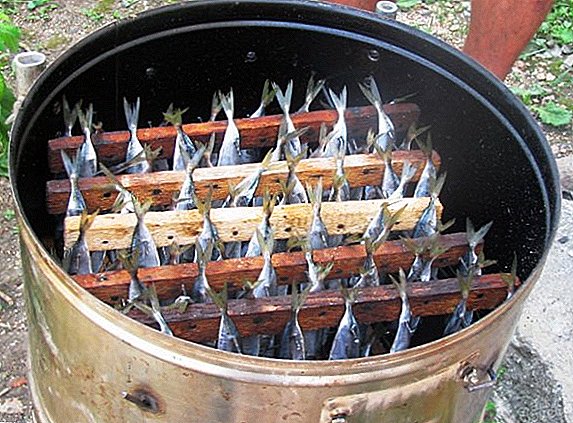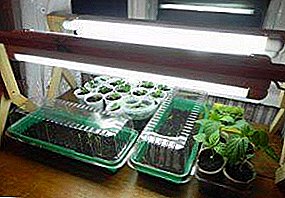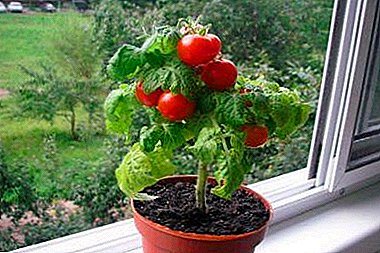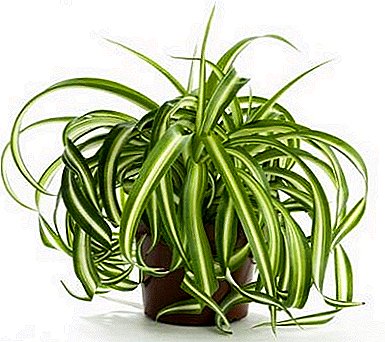
Chlorophytum crested - an ideal plant for home and office.
The flower is extremely unpretentious, it puts up with dry air, temperature changes, not too nutritious soil.
At the same time, chlorophytum is very useful: it heals the atmosphere, actively absorbing harmful radiation and dust, saturates the air with oxygen.
The plant is suitable for beginner gardeners, it simply multiplies and practically does not get sick.
General information
 Chlorophytum is a native of South Africa.
Chlorophytum is a native of South Africa.
In the wild, there are several dozen species of this plant, but chlorophytum crested has become most popular with gardeners.
The appearance of the flower is fully consistent with the name. Long narrow leaves are collected in bunches, a fountain towering above the ground.
The leaves of the flower are dense, glossy, monotonous-green or decorated with a brighter band in the center.
In the spring, chlorophytum throws out thin shoots on which small white flowers in the form of asterisks appear. Then in their place tiny sockets are formed. Sometimes the plant also produces the third tier of shoots, after which the small bush begins to resemble a magnificent cascade.
TIP: The flower looks particularly impressive in hanging baskets and pots. They can be mounted on walls, brackets and even on the ceiling. Chlorofitumens are suitable for greenhouses, apartments, offices, balconies and verandas, they are often used in a variety of green compositions.
Breeders deduced various variants of crested chlorophytum. The main difference is the size of the bush, the width and shade of the leaves. On sale you can find plants with dark and light green leaves, both wider and very narrow.
Chlorophytes look very elegant, decorated with white, cream or pale yellow stripes.
A few photos of Chlorophytum crested:


Home care
Consider the peculiarities of home care for Chlorophytum crested.
This flower can bring misfortune and even lead the house to ruin, as some hostesses think.
However, these rumors are not supported by real facts. At the same time it is precisely established that the flower is extremely healthy.
 It cleans the air from harmful impurities, dust, kitchen children, fights radiation from household appliances.
It cleans the air from harmful impurities, dust, kitchen children, fights radiation from household appliances.
The plant can be placed in the living room, bedroom, hallway, feels good in the kitchen and even in the bathroom with a window.
The flower is not too picky about the light. It can grow both at the window and in the depth of the room.
More light-requiring variegated forms. In the shade, they can lose the unusual color of the leaves, so these types are better placed near the window or strengthen the pots on a well-lit wall.
TIP: Direct sunlight is not very good for a flower. They can burn the leaves or discolor them. If the plant is on the south window, shade it in the midday hours.
Chlorophytum is considered one of the most unpretentious plants. To make him feel comfortable, you need:
- Water the plant as the topsoil dries, using soft settled or boiled water. In spring and summer, watering should be abundant, in late autumn it should be reduced so that the plant can rest.
- In the period of active growth weekly make a liquid complex fertilizer for ornamental plants.
Do not over-wet or dry. - Replant the flower every 2-3 years.
- Dust the leaves and at least once a week spray them with clean water. Once a month, arrange a warm shower for the plant, covering the ground in a pot with foil.
You can learn more about caring for Chlorophytum at home by watching the video:
Crown formation
 Chlorophytum, released 2-3 tiers of arrows with rosettes looks very decorative.
Chlorophytum, released 2-3 tiers of arrows with rosettes looks very decorative.
However, young shoots weaken the maternal plant, it ceases to grow deciduous mass and gradually loses all its beauty.
You can correct the situation by timely separating the sockets and planting them in separate pots.
Air shoots after separation of the outlet are cut off and discarded.
To bush looked beautiful, scissor dried and darkened leaves. Removal of old, lethargic leaves stimulates the early formation of new, fresh and strong ones.
TIP: In order not to damage the plant, cut only the outer leaves, without touching the inside of the rosettes.
Reproduction at home
The easiest way to reproduce chlorophytum is to separate the rosette formed on the air shoot and root it in a pot and ground.
With good watering sockets fit perfectly. Some flower growers prefer to sprinkle young rosettes with earth, not separating them from the bush.
Escape is cut off only after the young process has taken root.
If desired, the outlet can be rooted in water, and after the formation of roots transplanted into the soil. It is advisable to plant young plants in the summer, they will actively grow and will have time to gain strength before the winter dormancy period.
 Increased chlorophyta can be propagated by dividing the bush, combining this process with transplant.
Increased chlorophyta can be propagated by dividing the bush, combining this process with transplant.
An alternative breeding method is sowing seeds.
This option is more time consuming. Seeds are picked in the period of ripening of the boxes in February or March.
For better germination, they are soaked in a growth stimulator and then sown in a mini-greenhouse, in a well-hydrated nutrient substrate.
The greenhouse is placed in a well-lit place.
Seeds can be sown in a flat container, slightly deepening them into the soil and sprinkling a thin layer of soil. After sowing, the soil is moistened, and the container is closed with glass or plastic film. Outflows will appear in a few weeks.
TIP: To temper young shoots, open the greenhouse daily for a few minutes. When 2-3 leaflets appear on the sprouts, they can be planted in separate pots.
For good development, young chlorophytums require light soil and equal parts of peat, garden soil and sand. You can take a ready-made universal soil mixture, which is added to perlite, foam chips or moss.
In the pot you need a drainage of pebbles or broken bricks. The thicker the drainage layer, the lower the risk of pouring the plant when watering..
TIP: Adults are recommended to replant chlorophyta after 2-3 years. Usually the roots hinted at the drainage hole hint at the need for movement. The plant will suit any ceramic or plastic pot of sufficient depth.
Features reproduction Chlorophytum can learn by watching the video:
Diseases and pests
 Chlorofitumens are characterized by strong immunity and practically do not get sick. They are not afraid of pests.
Chlorofitumens are characterized by strong immunity and practically do not get sick. They are not afraid of pests.
Very rarely on the leaves of weakened plants you can see aphids.
The affected areas should be washed with warm water and a cotton swab, and then sprayed with a diluted insecticide. Usually one-time processing is enough.
Sometimes the leaves of chlorophytum change color, dry out or fall off. This does not mean an illness, in most cases the problem can be solved by slightly changing the plant care plan.
Brown tips of leaves may speak of mechanical damage or insufficiently nutritious soil. It is recommended to remove the damaged areas and apply liquid fertilizer diluted in water, at least 1 time per week.
Pale, soft, drooping leaves Signal a lack of lighting and too high temperature in the room. Move the plant closer to the window and more often open the window for ventilation.
Drying leaves there are plants that lack moisture. During the period of active growth, it is recommended to increase watering and regularly spray the flower with soft water at room temperature. Warm shower doesn’t hurt either.
TIP: Chlorophytum can be a prototype for a novice grower and the beginning of a future home greenhouse. Having started one copy, gradually expand the collection, settling in the apartment other types of this useful plant.


